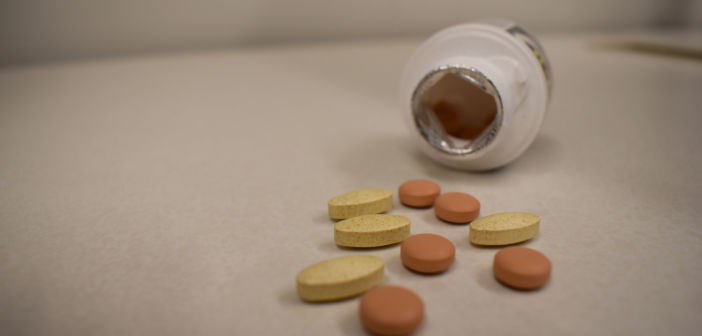It started with alcohol and pot.
By the time he was a junior in college, Joe was drinking from the moment he woke up until the moment he went to sleep. Sometimes, he drank as much as a case of beer or a fifth of liquor in a single day.
He dabbled with other drugs here and there but always knew he could put his responsibilities first if he needed to. He didn’t believe someone could get addicted to a drug.
That changed when he tried heroin.
Joe, now a Lehigh master’s student who requested his last name not be used, lost his job, broke off his engagement with his fiancée and watched a close friend receive a jail sentence of 7 1/2 years — this was his breaking point.
So, when a friend presented him with the opportunity to try something new, he thought, “Why not?”
When he used heroin for the first time, he knew he was in trouble.
“I fell in love with the feeling of doing it,” Joe said.
Greg Krausz, the director of Mid-Atlantic Rehabilitation Services, or MARS, said the opioid epidemic has a fairly significant presence in the Lehigh Valley.
According to Lehigh County coroner reports and research, drug deaths have nearly doubled in Lehigh County over the last five years. Data from the Pennsylvania State Coroners Association indicate that in 2015, Lehigh County had the eighth highest drug death rate in the state. Northampton County was 15th.
From Jan. 1 through Sept. 30, 2017, at least 243 people died because of drug use in Lehigh and Northampton counties, according to coroner reports. The actual number is likely higher, as Northampton County’s reports include only illegal drug deaths.
Single middle-aged white males made up the largest percentage of fatal overdoses, the majority of which were heroin-related. Kristen Wenrich, the director of Bethlehem’s health bureau, said data from the city of Bethlehem’s health bureau indicates that more than 1,400 residents from Lehigh and Northampton counties were hospitalized for a heroin overdose in 2016.
Krausz said the state of Pennsylvania was among the hardest hit in the country. A study by the Centers for Disease Control and Prevention corroborates that Pennsylvania had the third-highest drug-related death total in 2016.
As of January 2018, Tom Wolf, the governor of Pennsylvania, deemed the heroin and opioid epidemic a statewide disaster emergency. According to his website, the declaration is “the first-of-its-kind for a public health emergency in Pennsylvania and will utilize a command center at the Pennsylvania Emergency Management Agency to track progress and enhance coordination of health and public safety agencies.”
Wolf said he took this step to protect Pennsylvanians from this public health crisis and is using every tool at his disposal to provide treatment to those affected and improve response coordination.
Wenrich said about 80 percent of people with an addiction to heroin started with prescription medication.
Zachary Lysek, the Northampton County coroner, said these medications — particularly painkillers — are highly addictive.
“Our society has to get away from being so dependent on the pain medications as we are,” Lysek said.
Lisa Wolff, a senior manager of the Center for Humanistic Change, educates citizens of the Lehigh Valley on heroin and opioid prevention. She said heroin and other opioids — drugs that relieve pain — have similar effects on the brain. These drugs block pain signals and affect the pleasure center by making users “feel good.”
“It doesn’t take long (for these drugs) to take hold,” Wolff said.
She said even if someone takes a prescribed painkiller — such as Percocet — for as little as a week, the user’s body starts to become addicted to the drug within days. After the person is taken off the medication, they might go through withdrawal and feel nauseous for several days.
Wolff described withdrawal from heroin and similar drugs as being “dope sick.”
Symptoms of withdrawal and the need for pleasurable feelings incentivize people to take more drugs. Wolff said it becomes difficult for users to resist heroin because they know it will relieve dope sickness immediately.
“Dope sickness is its own monster,” Joe said. “It is literally the worst thing I’ve ever experienced, and I’ve broken bones. I’ve had concussions. I’ve cracked my skull open. Dope sick is worse than any of that, all day, every day.”
Scott Grim, the Lehigh County coroner, said while prescription medications are expensive and harder to get, heroin is easier to access, more widely available, cheaper and purer than it was in the past.
Wenrich said drug dealers lower the price of heroin to make it cheaper than prescription drugs and to capitalize on people who abuse prescribed medications. These users then become new customers for drug dealers.
“For drug dealers, it’s all business,” Wenrich said. “It comes down to dollars and cents. The more potent they make (a drug), the more attractive it is out in the street.”
Alcohol and other drugs can be gateways to heroin usage as well.
“Parents cannot minimize or normalize alcohol and marijuana use in their teens,” Wolff said. “It is not a rite of passage. We can’t make light of it and say, ‘Well, everybody does it.’”
Krausz said people use drugs to feel something different, feel better or not feel anything at all, but no one does drugs with the intention of developing an addiction.
“The drug takes over and takes them down a path that they never intended to go,” Krausz said. “People don’t want to become somebody who looks and acts like they’re not loveable, and that’s what the substance makes them look like. People aren’t trying to destroy all their relationships, destroy their health and do all those things to themselves.”
Wolff said addiction is a brain disease that changes the brain’s makeup, turning the user into a different person.
She said signs of heroin or opioid usage include pinpoint pupils, nodding out, and scratching and itching. People who exhibit withdrawal symptoms — such as nausea and stomach aches — or who steal to fund their addiction also raise red flags.
Over his 22 years working in the drug and alcohol field, Krausz said he’s seen an increase in the number of people seeking treatment for drug usage.
As a result, Krausz said the amount of available beds in residential and intensive care facilities is limited, making it harder for people to obtain this much-needed treatment.
Depending on someone’s needs, Krausz said they either go directly to an outpatient center or seek higher-level inpatient services prior to checking into an outpatient facility.
MARS is an outpatient facility that works mainly with citizens of Lehigh and Northampton counties. As of December 2017, the center was treating 300 people — the majority of whom fall into the 18-25 age group, where Krausz said substance abuse problems usually start. Patients typically go through group, individual and family counseling for substance use each week.
“We think it’s very, very important to include families in treatment,” Krausz said. “Some combination of individual, group and family counseling works better than just one of those things by themselves. So, we try to connect people to meet their needs.”
Krausz said everyone reacts differently to treatment. For some people, treatment works the first time, but for others, it doesn’t take hold until the 100th time.
The treatment center’s long-term goal is for each person to move closer to their personal definition of health.
“The ultimate goal is to get somebody substance-free so that they’re free from that attachment,” Krausz said. “And to do that, people have to break the unhealthy relationship they have with their substance.”
Grim said somebody once told him it takes seven weeks to form a habit and seven weeks to break it.
“The first time you use heroin, you’re addicted,” Grim said. “So, long-term treatment, I think, is definitely necessary to beat it.”
In August 2016, Pennsylvania instituted a prescription drug monitoring program.
Wenrich said the initiative was designed to restrict the number of prescribed opioids. However, as the number of prescriptions decreases, the state might experience a spike in heroin usage. With the new initiative, Wenrich said things will become worse before they become better.
Wolff said the focus of drug-related initiatives is changing to emphasize helping, rather than punishing drug users. She said the stigma around drug usage is also evolving.
“A lot of families (of drug users) started to speak out because they didn’t want their child’s life to not mean anything,” Wolff said.
Krausz said service providers are working to make treatment more accessible and putting prevention efforts in place to educate the community before substance use becomes a problem.
In 2015, the health bureau formed the Northampton County Heroin and Opioid Task Force, which includes agencies such as the county coroner, St. Luke’s Hospital and the police department.
“We developed an action plan with evidence-based strategies to respond to the epidemic in our community,” Wenrich said.
The task force was granted a little more than $100,000 last April to fund substance abuse treatment programs, community-based education and the availability of naloxone — a drug that reverses the effects of an overdose and is available to anyone in Pennsylvania.
Bethlehem’s health bureau also collaborated with both the Bethlehem and Bangor police departments to create a pilot program that encourages residents to seek assistance from either department and obtain treatment.
Local organizations — including MARS — are putting together opioid support teams that work with hospitals in both Lehigh and Northampton counties to ensure those who have overdosed or have a substance abuse problems receive proper treatment.
Wenrich said because the majority of those with substance use problems are white, middle-aged males in the workforce, the health bureau has increased efforts to educate job sites on the signs and impacts of substance use and to promote drug-free workplaces.
“This issue, why it’s so huge, is because it really is crossing every socioeconomic status,” Wenrich said. “It can happen to anyone, and I think that’s why there’s such a huge focus on this issue right now. It’s one of the top areas that we’re working on here in our community because of the numbers and the increases that we’re seeing.”






Comment policy
Comments posted to The Brown and White website are reviewed by a moderator before being approved. Incendiary speech or harassing language, including comments targeted at individuals, may be deemed unacceptable and not published. Spam and other soliciting will also be declined.
The Brown and White also reserves the right to not publish entirely anonymous comments.
1 Comment
Pingback: Opioid epidemic hits home in Lehigh Valley | Dan Carpenter Recovery #365/Operation Clean Recovery